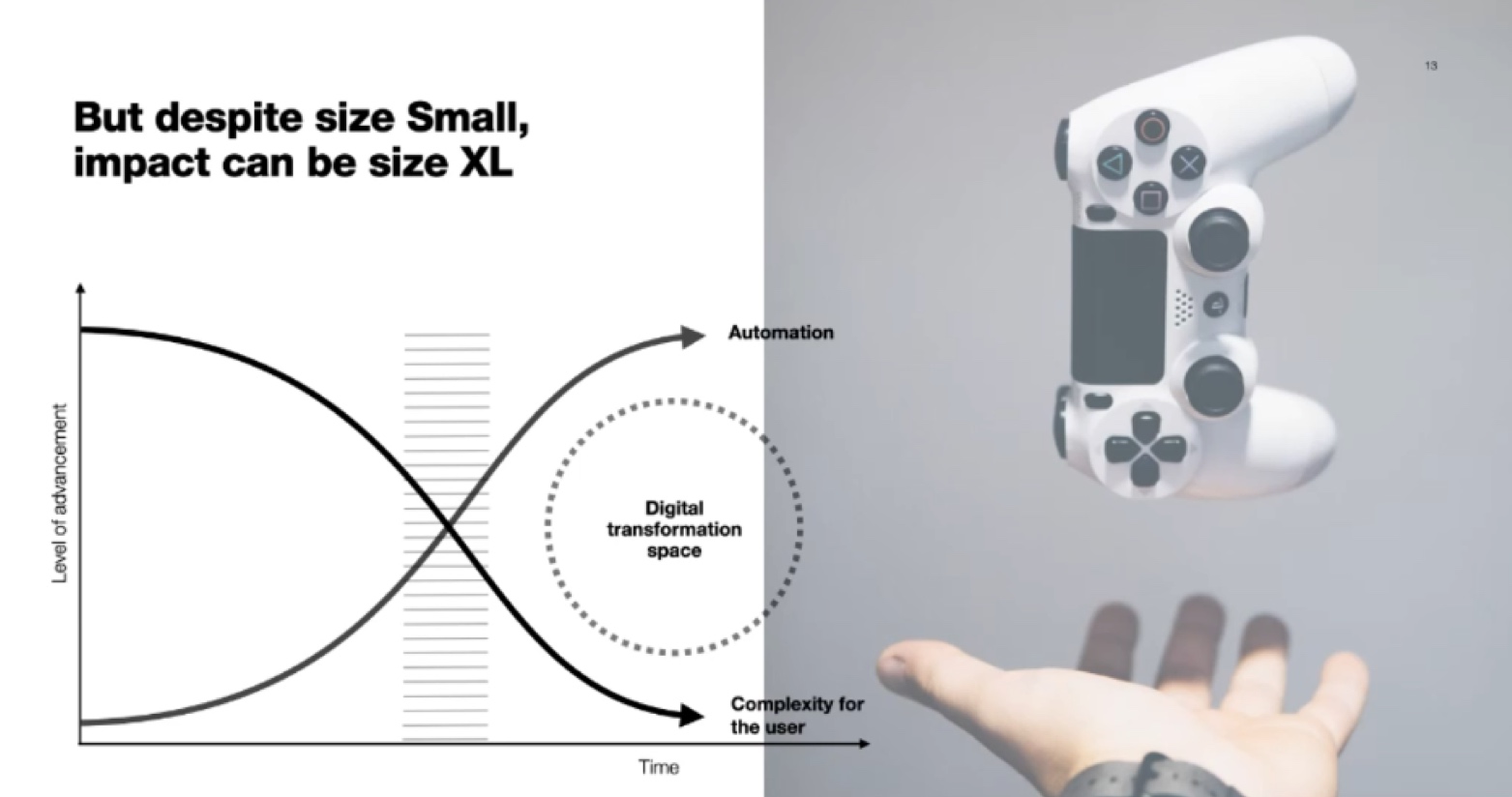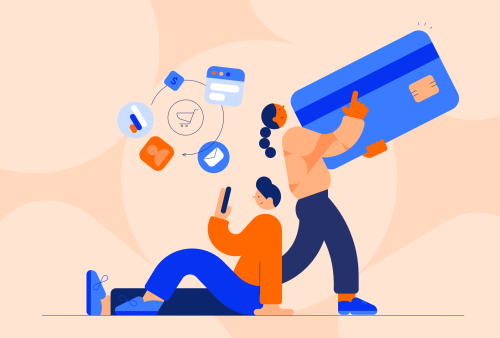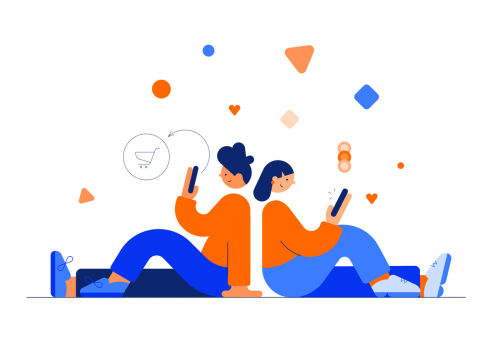author

Content Marketing Manager
published-on
11 Mar 2021
tags
"Design is a team's sport," states Martin Delfer right at the beginning of his lecture. He knows what he's talking about: he is the co-founder of Designit and Head of Designit in the Nordics, among other impressive titles. Although Delfer is Danish and was there to talk about design, he did not have a session about Danish design's beauty. Instead, during his guest appearance on Centili Anniversary Week, he showed us the fundamentals of business design and the way the great examples of reinvented business designs have changed the world.
At Centili, one of the key strategy elements is the customer-centric approach. We have an evolving range of products with one thing in common: the simplicity of utilisation. As we readily offer custom-made solutions to our customers, we were curious to learn about the design process from a leading industry expert's perspective. Here are a few things we wanted to share.
What is "design"?
To a layman - design is the aesthetic element of a product. It is the way the product is visually shaped to please the consumer's senses. Design is much more than that: as the interface or the console, it enables users to utilise the product. Design encompasses ergonomics, utility, and finally - aesthetic rendering.
Illustrating the power, the impact, and the change design can drive, Delfer showcased an interesting example: the Novopen 4 from Novo Nordisk. A simple-looking, elegant pen contains a life-saving substance: insulin. When this product first appeared, it was the game-changer for diabetics worldwide. It revolutionised the way to insulin administration, making it easily applicable to virtually everyone. The Novopen 4 is an example of a design that enabled a new way of utilising, rather than improving the “looks” of an old product.
What design encompasses - The Two Great Examples
For a better understanding of the design ideas, it helps when you use visual props. Delfer chose two well-known examples to illustrate what goes into a design or what a design can do: the Coca-Cola packaging and an aircraft cockpit.
Example 1 - Coca-Cola packaging
When you think of a Coca-Cola bottle, the first visual idea that comes to mind is the logo and the colour red. These are indeed the key elements of its design, but there is more to it. The wide mouth and the "stay tab" invented in 1985 and 1990 enabled an unprecedented user experience - drinking without fretting that you will spill the drink all over your shirt. The stay tab revolutionised the way people handled the packaging. Instead of removing the lid and throwing it away on the beach, or wherever you consumed it, it stayed on. Ultimately, it helped America and then the rest of the world, damage the environment less. The design soon became the standard, as smaller brands followed suit and adopted the improved design to their product.
Example 2 - Aircraft cockpit
The flight console in the cockpit is the perfect example of an interface. It is only thanks to it that pilots can operate the aircraft. It is the point of contact between "man and machine", the only way to make the giant piece of machinery take off, navigate, make turns, and land on the ground. It also enables communication with the control centres and the passengers, and it can even adjust the passengers' user experience.
Going back to the first example, the can or the bottle is the interface by which we consume Coca Cola.
Check out the Martin Delfer’s webinar snippet below.
Design is the interface, the interface is the differentiator
Nowadays, science and mechanics have evolved so much that the differences have become insignificant. The differentiators that make people choose one solution over others are the interface and design that makes it the most accessible and easy to use.
Thanks to technological advancements, today's interfaces come very small - think of your smartphone. Until recently, the operating technology was extremely complicated, only to be replaced by smooth, intelligent technology in the last decades. In the fintech space, the automation went vertically upwards, changing the payment and transaction experience completely.
 shot-blog
shot-blog
The design of services
Before designing a product, every company has a job to design its services. For better or worse, every company does it - and it seems increasingly smart to approach this stage with care and close attention.
"As a company, the main goal is to be at the intersection of viability, feasibility, and desirability," said Delfer.
 shot-blog-2
shot-blog-2
Here are the sets that make the essence of service design explained.
Business Viability - The strategic imperative of any venture, business viability aligns the ambition with the company vision.
Feasibility - Weighing factors such as costs or technical capabilities provide insight into whether the goal is possible to achieve.
Desirability - The often overlooked question is - do people really want it? Many companies completely ignore desirability, whether in the design of the product or the interface design.
Desirability - The Ignored Element
Companies that make digital products compete in an extremely competitive arena. Products must fulfil a myriad of technical conditions, including safety and transparency. With so much attention devoted to these technologies' backend, it is no wonder that the attention to desirability sometimes flails. Desirability, however, relies on close attention to customers and empathising with their needs.
When we talk about desirability, one of the great examples Delfer shared is the Starbucks case. "We thought we were in the coffee business serving people. We soon discovered it was the exact opposite. We were in the people business serving coffee." The famous quote by Howard Schultz, the co-founder and former CEO of Starbucks, shows the paradigm shift that made Starbucks a multi-billion dollar global empire.
Knowing your customers' true wishes gets you closer to designing the product and how you communicate it. Asking the right questions, and taking notes of the answer is a great starting point. But is that all there is to it?
Reaching the Signature Experience With Your Product
Delfer is a firm believer in observation. He believes companies should take customer stories with a grain of salt. Only observing can bring the necessary validation - the empirical proof that customers genuinely have the experience they say they do. It also helps differentiate the experience levels that add up to three categories.
Signature experiences. The experiences that people enjoy as if they've designed them. The "absolute fit" to consumers' preferences.
Experiences. The experiences on par with comparable service providers but the best in class.
Baseline experiences. On par with comparable service providers, the baseline experiences meet a product or service's basic expectations.
Designing a signature experience is the most difficult to achieve because it requires the most careful customisation and, before that, observing the customer.
"Consumer research is key. Otherwise, you cannot get to the desirability part," says Delfer. We tend to agree.
Involve the customers early in the design process
The perception that a company has of its product is biased. It often assumes that consumers see things similarly, while reality shows a different picture. Customers are reluctant to part from a product they already own - even when it's flawed, and they would benefit from switching to yours.
Delfer, in his vast consultant experience, notices the trend among the digital companies: organisations are more ready to admit that they have knowledge gaps when it comes to consumers' wishes. And they are prepared to listen to the customers and include them in the design process early on.
In our industries, there is a continual pursuit of new acquisitions, and the competition is high. Technology develops fast - and the consumer needs even faster. To large, bulky systems like telcos, developing in-house platforms for monetisation of OTT content can take years. By the time the product reaches the market stage, it may be too late in the game.
For telcos, the variety of OTT content becomes the differentiator, and with such dynamic consumer trends, it's impossible to keep up with the fast pace. For digital merchants and content providers, bundling with others presents the opportunity to market.
Companies like Centili offer precisely that: a Monetisation Platform-as-a-Service that does the pedestrian work for the telcos while providing a single integration and easy setup. The need to deliver the payment methods quickly informed the design of the Centili Maestro service. With our customers' feedback, we are always ready to upgrade the existing service to meet our customer's demands.
In the end, it is the end-users that look for the most sophisticated customer journey, and we are all here to make that possible.
If you’d like to receive more stories like this to your inbox, subscribe to our monthly newsletter below.





